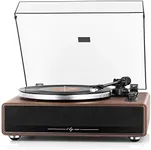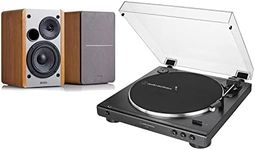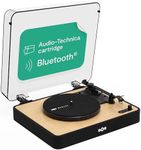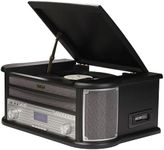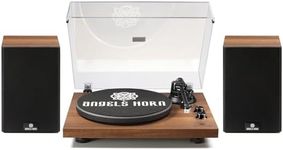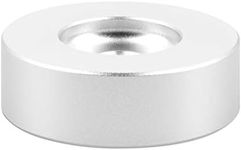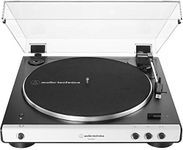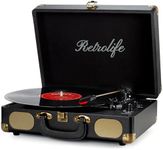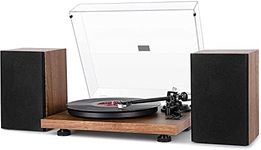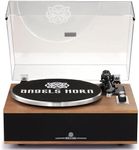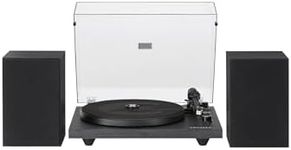Buying Guide for the Best Record Player With Speakers
Choosing the right record player with speakers can be a delightful experience, especially if you are a music enthusiast or a vinyl collector. The key is to understand the various specifications and features that can affect the sound quality, usability, and overall experience. By focusing on these aspects, you can find a record player that suits your needs and preferences perfectly.Turntable SpeedTurntable speed refers to the revolutions per minute (RPM) at which the record player spins the vinyl. The most common speeds are 33 1/3 RPM, 45 RPM, and 78 RPM. This spec is important because different records are designed to be played at specific speeds. For example, most LPs (long-playing records) are played at 33 1/3 RPM, while singles are often played at 45 RPM. If you have a collection of older records, you might need a player that supports 78 RPM. To pick the right one, consider the types of records you own or plan to buy.
Cartridge TypeThe cartridge is the component that holds the needle (stylus) and converts the grooves on the vinyl into an audio signal. There are two main types: moving magnet (MM) and moving coil (MC). MM cartridges are more common and generally more affordable, making them a good choice for beginners. MC cartridges are often preferred by audiophiles for their superior sound quality but can be more expensive and require a compatible preamp. Choose based on your level of audio fidelity preference and budget.
Built-in PreampA preamp amplifies the signal from the cartridge to a level that can be processed by speakers or an amplifier. Some record players come with a built-in preamp, which simplifies the setup process and is convenient for beginners. If you already have a high-quality external preamp or plan to upgrade your audio system, you might prefer a record player without a built-in preamp. Decide based on your current audio setup and future upgrade plans.
Drive TypeThe drive type refers to how the turntable is powered. There are two main types: belt drive and direct drive. Belt drive turntables use an elastic belt to spin the platter, which can reduce motor noise and vibration, making them ideal for home listening. Direct drive turntables have the motor directly connected to the platter, offering more consistent speed and durability, which is preferred by DJs. Choose a belt drive for home use and a direct drive if you plan to use the turntable for DJing or need more robust performance.
Speaker QualitySince you are looking for a record player with built-in speakers, the quality of these speakers is crucial. Built-in speakers vary widely in terms of sound quality, from basic to high-fidelity. If you are an audiophile or want the best possible sound, you might consider a record player with high-quality built-in speakers or the option to connect external speakers. Evaluate the sound quality by listening to demos if possible, and consider your space and listening habits.
PortabilityPortability refers to how easy it is to move the record player around. Some models are designed to be lightweight and compact, making them easy to transport. This can be important if you plan to take your record player to different locations or have limited space. Consider how often you will move the player and where you will use it to determine the right level of portability for your needs.
Additional FeaturesModern record players often come with additional features such as Bluetooth connectivity, USB ports for digitizing vinyl, and automatic tonearm return. These features can add convenience and versatility to your listening experience. Think about which additional features are important to you, such as the ability to connect wirelessly to other devices or easily convert your vinyl collection to digital format.

